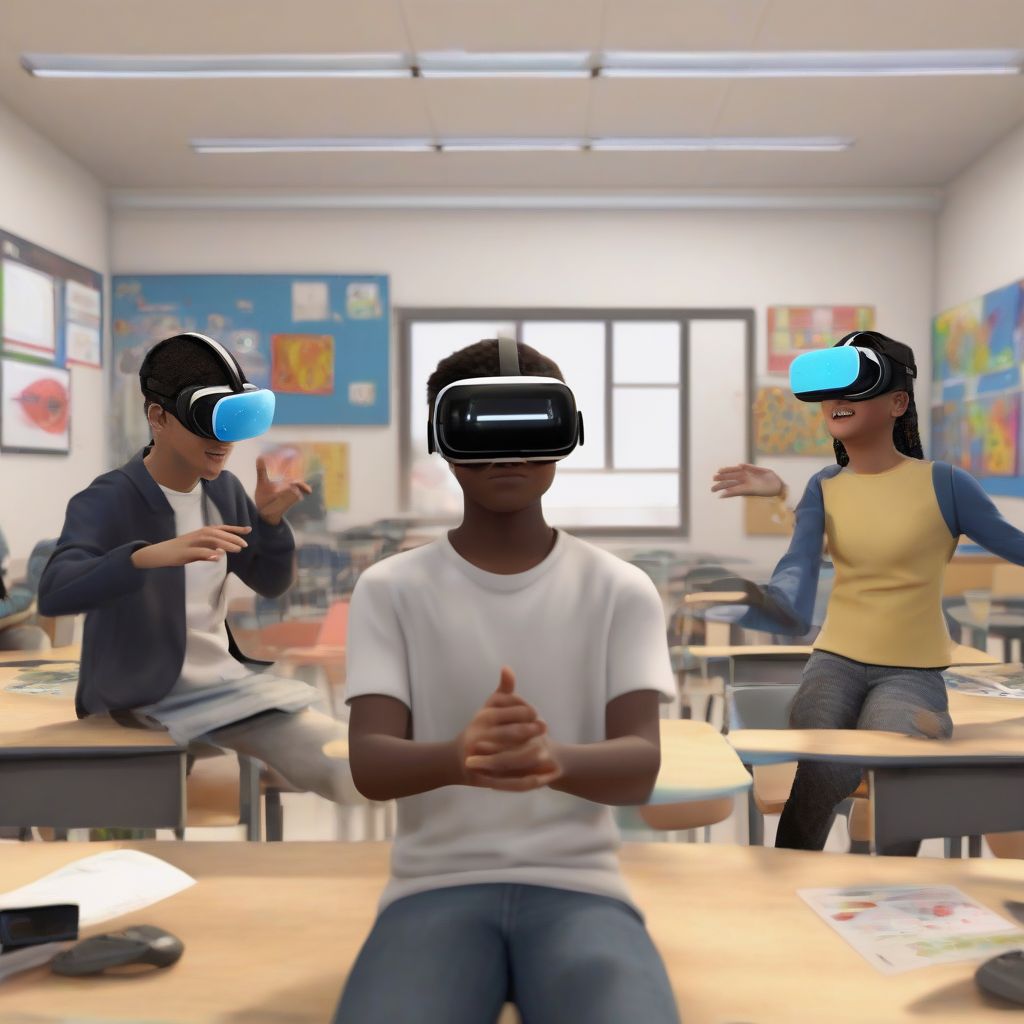Imagine a classroom not bound by walls, where students can explore the depths of the ocean or the intricacies of the human body without leaving their seats. This is the potential of virtual reality (VR) in higher education, a transformative technology poised to revolutionize the way we teach and learn.
A New Dimension of Learning
For years, educators have sought ways to create immersive and engaging learning experiences. VR, with its ability to transport users to different environments and provide interactive simulations, presents a powerful tool for achieving this goal. Gone are the days of passive learning from textbooks and lectures. VR promises an active and experiential approach, allowing students to learn by doing, exploring, and discovering.
VR: Transforming the Educational Landscape
Let’s delve into the specific ways VR is reshaping the future of higher education:
1. Enhanced Engagement and Deeper Understanding
Traditional teaching methods often struggle to cater to diverse learning styles. VR, however, offers a dynamic and interactive alternative, capturing students’ attention and fostering a deeper understanding of complex concepts. Imagine medical students practicing surgery on virtual patients, history students walking through ancient Rome, or engineering students designing and testing structures in a virtual world.
2. Bridging the Gap Between Theory and Practice
One of the most significant challenges in education is bridging the gap between theoretical knowledge and practical application. VR provides a safe and controlled environment for students to apply their learning, make decisions, and witness the consequences of their actions. This hands-on experience is invaluable in preparing students for real-world scenarios.
3. Expanding Access to Education
Geographical barriers and limited resources often restrict access to quality education. VR has the potential to democratize learning, making it accessible to students regardless of their location or socioeconomic background. Imagine attending lectures by renowned professors from world-class universities, all from the comfort of your home.
4. Fostering Collaboration and Communication
VR can facilitate collaboration among students and educators from across the globe. Imagine students from different countries working together on a virtual science project, sharing ideas, and learning from each other’s perspectives. This globalized approach to education fosters intercultural understanding and prepares students for a interconnected world.
 Virtual Reality Classroom
Virtual Reality Classroom
Challenges and Opportunities on the Horizon
While the potential of VR in education is immense, its widespread adoption comes with challenges:
- Cost: Implementing VR technology can be expensive, especially for institutions with limited budgets. However, as technology advances, the cost of VR hardware and software is expected to decrease.
- Training: Educators need to be trained on how to effectively integrate VR into their teaching methodologies. This requires professional development opportunities and support from institutions.
- Content Development: Creating high-quality VR educational content can be time-consuming and resource-intensive. Collaborative efforts between educators, developers, and subject matter experts are crucial for developing engaging and effective VR experiences.
The Future is Immersive
Despite these challenges, the future of VR in higher education is bright. As technology continues to evolve, we can expect even more innovative applications of VR in the classroom. Imagine personalized learning paths tailored to individual student needs, virtual field trips to remote and inaccessible locations, and advanced simulations that push the boundaries of our imagination.
The adoption of VR in higher education is not merely a technological upgrade; it represents a fundamental shift in how we approach teaching and learning. It’s about creating engaging, immersive, and effective learning experiences that prepare students for the challenges and opportunities of the 21st century.
Embracing the Virtual Revolution
The future of education is immersive, interactive, and engaging. As we venture further into the digital age, VR stands as a powerful tool for transforming the educational landscape. By embracing this technology, educators and institutions can unlock a world of possibilities for their students, fostering a love of learning that extends far beyond the confines of the traditional classroom.
Are you ready to explore the transformative potential of VR in your classroom? Share your thoughts and ideas in the comments below!
[amazon bestseller=”virtual reality headsets”]
